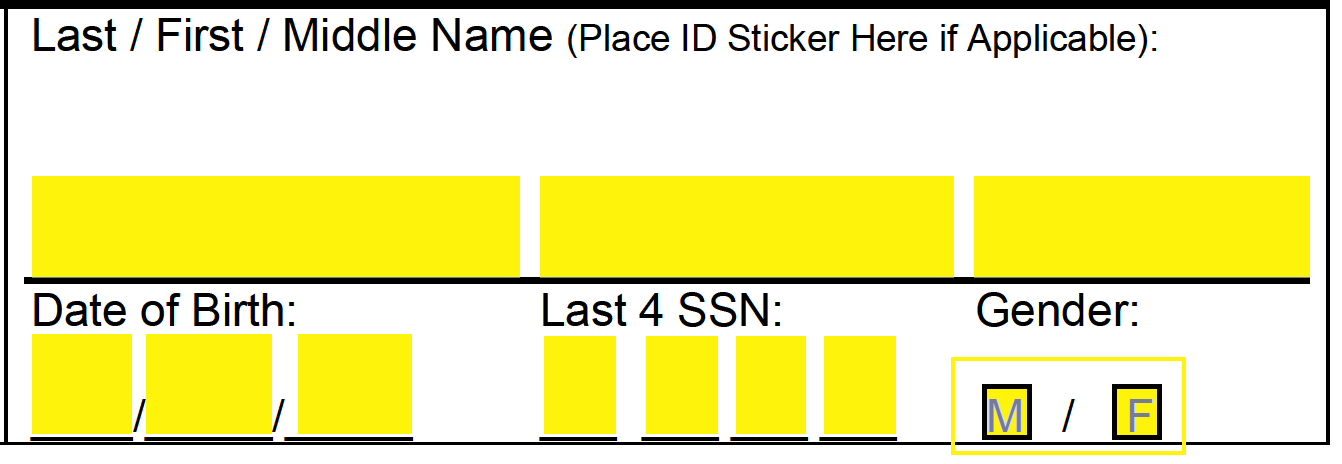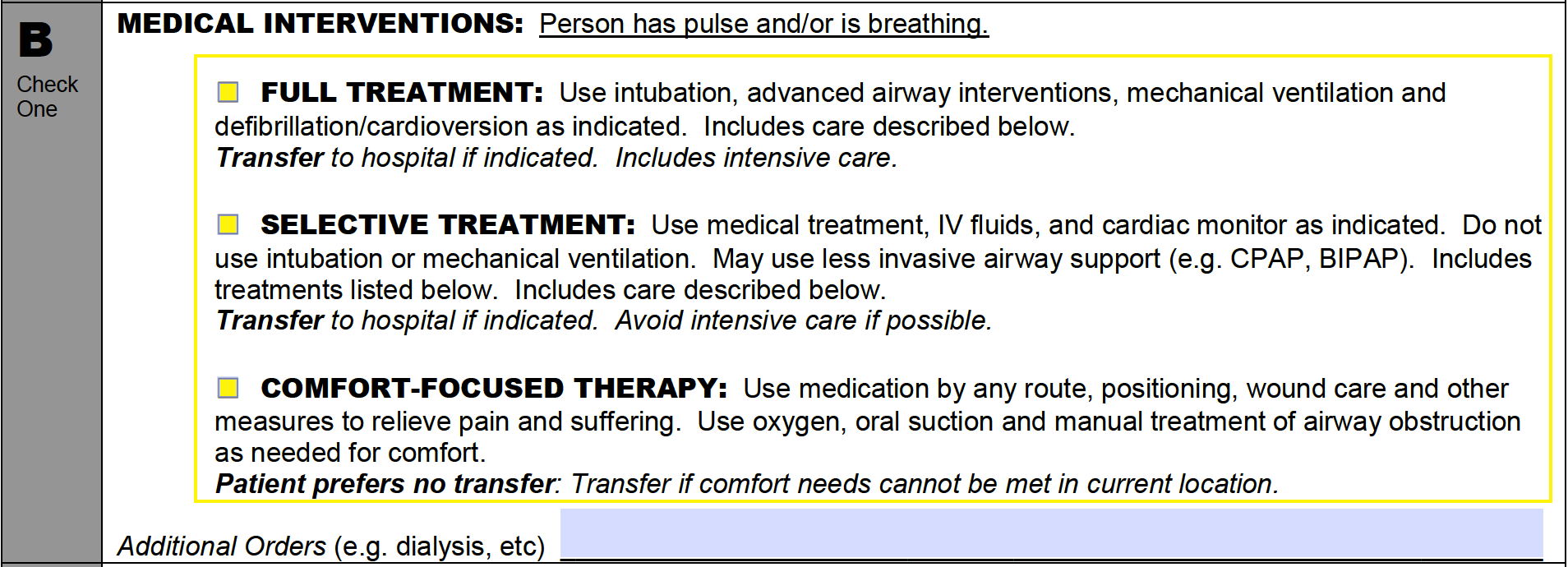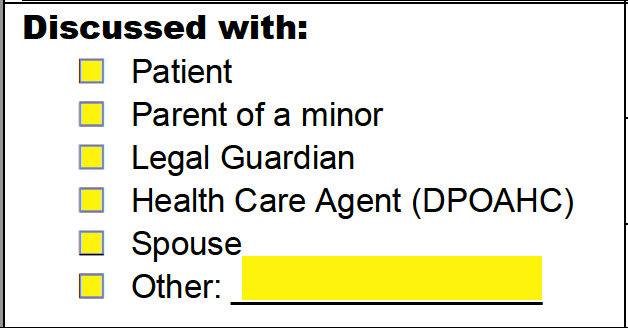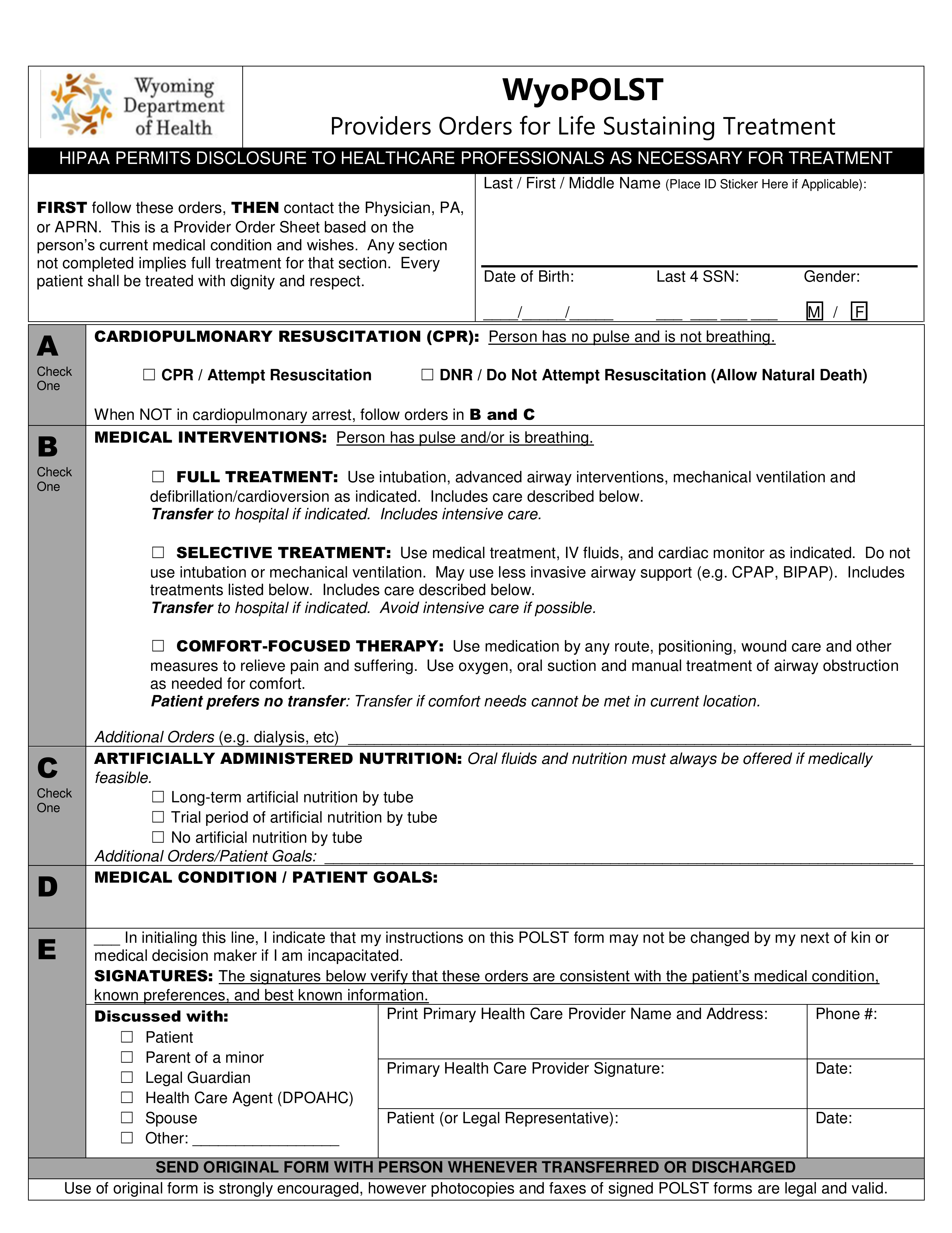Updated July 19, 2023
The Wyoming do not resuscitate (DNR) order form is a legal document that instructs medical service providers to withhold the application of cardiopulmonary resuscitation (CPR) on a patient who is not breathing or has no heartbeat. An individual may voluntarily request a DNR order from their doctor, or if they cannot make medical decisions on their own, a legal representative may ask for the form on their behalf. Medical staff who view the DNR order must honor the patient’s instructions and allow them to die naturally.
Wyoming is currently developing a new program entitling residents to define their preferred end-of-life resuscitative treatments as well as the medications they desire while still with a heartbeat and able to breathe. This program, known as the “Providers Orders for Life-Sustaining Treatment (POLST)” can be applied for via completion of the POLST form available below.
Laws – § 35-22-501 through 35-22-509
Required to Sign (POLST) – Patient (or representative) and primary health care provider.
How to Write
Step 1 – Download the Wyoming POLST form in PDF.
Step 2 – Start by entering the patient’s full name (last, first, middle). If the individual has an ID sticker, place it just above the individual’s name. Next, enter the patient’s date of birth, last four (4) digits of SSN, and gender (select applicable box).

Step 3 – Section A is used to indicate whether or not the patient should be resuscitated when their heart or breathing stops. Only one (1) of the available options may be selected.

Select the “CPR / Attempt Resuscitation” option if the patient should be resuscitated,
![]()
If the patient should not be resuscitated, select “DNR / Do Not Attempt Resuscitation (Allow Natural Death).”![]() Step 4 – Section B contains three (3) levels of medical interventions which will be administered to the patient when they have a pulse or can breathe. You may select only one (1) of available options.
Step 4 – Section B contains three (3) levels of medical interventions which will be administered to the patient when they have a pulse or can breathe. You may select only one (1) of available options.

Choose “FULL TREATMENT” if the patient should be provided with all medical interventions that might help in prolonging their life.

Choose “SELECTIVE TREATMENT” if the patient is to be treated with non-invasive and unburdensome medical interventions.

Choose “COMFORT-FOCUSED THERAPY” if the patient should only receive medical interventions that will help them in relieving pain and suffering.

Step 5 – Any additional orders or instructions regarding the aforementioned medical interventions can be entered in the remaining space in section B.
![]()
Step 6 – Section C allows you to indicate the preferred application of artificially administered nutrition. Select one (1) of the following options to specify this information:
- Long-term artificial nutrition by tube
- Trial period of artificial nutrition by tube
- No artificial nutrition by tube
Any additional orders or goals regarding artificially administered nutrition should be entered in the remaining space.

Step 7 – In section D, provide additional information concerning the patient’s medical condition or general goals.
![]()
Step 8 – The patient or their authorized representative may provide their initials in section E if they would like the DNR order to remain unaltered by the patient’s next of kin or medical decision maker (only applies when the patient is incapacitated).

Step 9 – Below “Discussed with” in section E, choose one (1) of the options to indicate who requested this form (if other, explain).

Step 10 – Complete section E by having the patient’s primary health care provider enter their name, address, phone number, signature, and the date. The patient or their representative must then provide their signature along with the date.

Step 11 – Proceed to page (2) and enter the patient’s name, date of birth, and gender in the first three (3) fields.

Step 12 – Below “Additional Contact Information (optional),” you may enter the contact details of the patient’s next of kin, guardian, surrogate, or other contact person. The requested information is as follows:
- Name
- Relationship to patient
- Phone number
![]()
Step 13 – Check the applicable boxes to indicate whether the patient has an advanced directive (or living will), DPOAHC, or if they are an organ donor. All corresponding documentation should be attached to the POLST form.
![]()
Step 14 – It is recommended that the POLST form is reviewed by a medical professional when the patient is moved from a medical facility, if their health status changes, or if they alter their treatment preferences. In these instances, the medical professional must provide the following information below the “Review of WyoPOLST” heading found on page (2):
- Review date
- Name and signature
- Reason for review
- Review outcome



